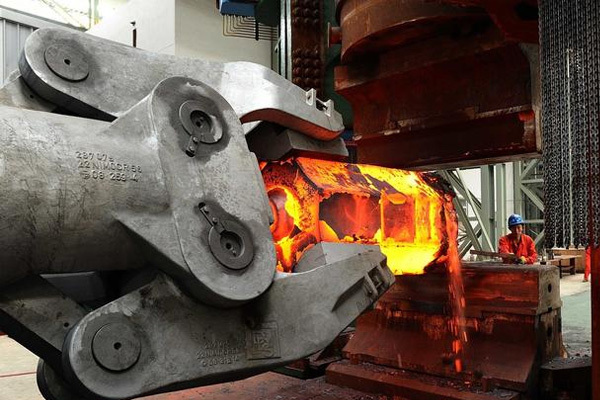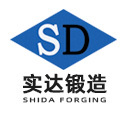Classification, characteristics, and equipment used in forging
Release time:
2020-10-20
Author:
Source:
Abstract
Forging is a processing method that uses forging machinery to apply pressure to metal blanks, causing them to undergo plastic deformation to obtain forgings with certain mechanical properties, shapes, and sizes. It is one of the two main components of forging and stamping.
Forging can eliminate defects such as porosity that occur during the smelting process, optimize the microstructure, and generally, due to the preservation of the complete metal flow lines, the mechanical properties of forgings are better than those of castings made from the same material. Important parts in machinery with high loads and severe working conditions, except for simple shapes that can use rolled sheets, profiles, or welded parts, mostly use forgings.
According to the forming mechanism, forging can be divided into free forging, die forging, ring rolling, and special forging.
Characteristics of free forging:
Improves the microstructure and enhances mechanical properties. Through forging, the coarse crystal structure inside the metal is broken up: defects such as pores, shrinkage cavities, and cracks are compressed, increasing density, and the fiber flow lines of the metal are reasonably distributed across the cross-section of the forgings, improving the mechanical properties of the metal.
Low cost, reasonable economy. The versatility of forging equipment and tools is good, the production preparation cycle is short, and it is convenient to change products.
Flexible process, strong adaptability.
Forging size accuracy is low.
Free forging is mainly applied to the production of single pieces in small batches, forgings with not very complex shapes, and forgings with low dimensional accuracy requirements, as well as some large forgings.
Equipment for free forging:
Air hammer: simple structure, flexible operation, easy maintenance, but with relatively low striking force.
Hydraulic press: The hydraulic press causes the blank to undergo plastic deformation under static pressure, working smoothly, with low noise and good working conditions, generating large pressure, but the equipment is large, structurally complex, and expensive.
Both types of equipment do not have overload damage issues, but if the tonnage of the equipment is chosen too small, the internal forging of the forgings will be insufficient, and the productivity will be low. Conversely, if the tonnage of the equipment is chosen too large, it will waste manpower and financial resources.
The selection of forging equipment is mainly related to factors such as deformation area, material of the forgings, and deformation temperature.
Can be used for upsetting, elongating, punching, expanding holes, bending, and shifting.
Determining the initial forging temperature: The initial forging temperature should be raised as much as possible without overheating or burning defects, so that the metal has good forgeability. The initial forging temperature is generally controlled to be 150-250°C below the solidus line.
Die forging is divided into open die forging and closed die forging.
Definition of die forging: The method of forging the heated blank placed in a mold fixed to the die forging equipment is called die forging. Die forging is the main process method for forging using special forging dies to obtain the desired shape and size of forgings.
The characteristics of die forging are: under the action of the forging press, the blank is forced to plastically flow and form in the die cavity, thus obtaining forgings with better quality than free forging.

recommend Reading
Forging flame heating equipment and its application 1 - Intermittent loading flame heating equipment
2020-10-20
Classification, characteristics, and equipment used in forging
2020-10-20
Standard for flange sealing gaskets
2020-10-20




